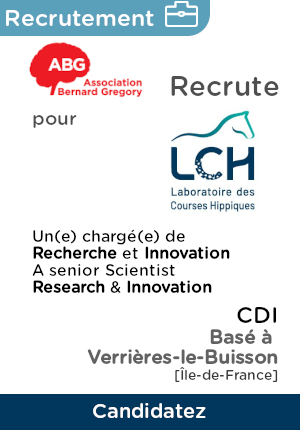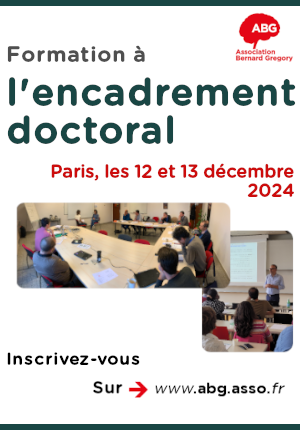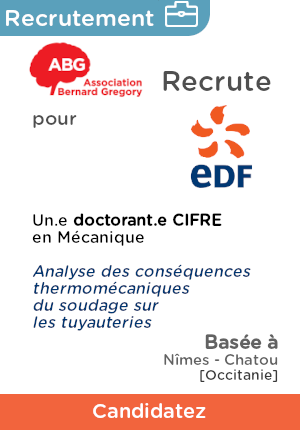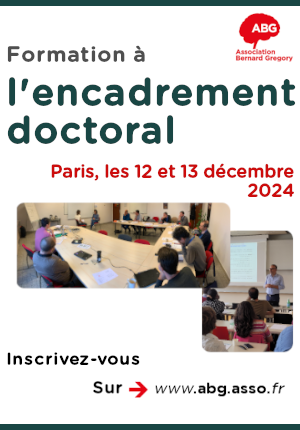CarboWet : Bilan carbone d'une zone tampon humide artificielle // CarboWet: Carbon balance of artificial wetland
|
ABG-124854
ADUM-50706 |
Thesis topic | |
| 2024-06-30 | Other public funding |
Université Paris-Saclay GS Biosphera - Biologie, Société, Ecologie & Environnement, Ressources, Agriculture & Alimentation
ANTONY cedex - France
CarboWet : Bilan carbone d'une zone tampon humide artificielle // CarboWet: Carbon balance of artificial wetland
- Ecology, environment
carbonate, co2, hydrologie, zone humide, saisonnalité, émissions
carbonate, co2, hydrology, wetland, seasonality, emissions
carbonate, co2, hydrology, wetland, seasonality, emissions
Topic description
La restauration des écosystèmes devient un enjeu majeur au sein de l'EU. Après les différentes phases d'aménagements, de nombreux territoires ont été fortement impactés notamment par le remembrement et les opérations de valorisation agricole. La surface des zones humides a ainsi été fortement réduite. Or ces zones humides rendent des services écosystémiques. Dans le contexte des territoires agricoles drainés, des zones tampons humides artificielles ont pour rôle d'intercepter les eaux de drainage. Elles contribuent à réduire les transferts de contaminants et limiter la dégradation de la ressource en eau. Plusieurs services ont été étudiés et quantifiés (régulation qualité de l'eau, support biodiversité, culturel), nous souhaitons aborder dans ce travail de thèse à l'évaluation de la restauration de zone tampon humide artificielle sur le bilan carbone et ainsi répondre à trois objectifs principaux :
1) Etablir un bilan carbone documenté à partir de données expérimentales in situ
2) Quantifier les principaux pôles contributeurs du bilan carbone en incluant les compartiments biologiques (végétations, respiration microbienne) et géologiques (carbone inorganique provenant de substrat carbonaté)
3) Evaluer la trajectoire temporelle du bilan carbone de la zone tampon humide artificielle.
La méthodologie s'appuiera sur le site expérimental de Rampillon en Seine et Marne. La ZTHA a été construite en 2010. Inrae dispose d'un suivi de plus de 10 ans sur de nombreux paramètres. Depuis 2017, une tour eddy covariance permet de suivre les émissions de CO2 de la ZTHA. Des suivis TOC des eaux en entrée et en sortie de la ZTHA sont aussi disponibles. Des mésocosmes in situ sont installés au milieu de la ZTHA dans le but de quantifier des processus en condition semi contrôlée. Un modèle carbone de la ZTHA devra être construit à partir des données obtenues et des travaux antérieurs publiés.
Les résultats contribueront à mieux comprendre la dynamique du carbone dans les zones humides restaurées. Des recommandations sur la gestion des hydropériodes, de la végétation seront proposées. Enfin un résultat important traitera de la trajectoire temporelle des émissions de CO2 et de sa prise en compte dans les opérations de restauration écologique.
------------------------------------------------------------------------------------------------------------------------------------------------------------------------
------------------------------------------------------------------------------------------------------------------------------------------------------------------------
Restoring ecosystems is becoming a major challenge for the EU. Following the various development phases, many areas have been severely impacted, particularly by land reclamation and agricultural development. As a result, the surface area of wetlands has been drastically reduced. Yet these wetlands provide ecosystem services. In the context of subsurface drained agricultural areas, the role of artificial wetland buffer zones is to intercept drainage water. They help to reduce the transfer of contaminants and limit the degradation of water resources. A number of services have been studied and quantified (water quality regulation, biodiversity support, cultural). In this thesis, we want to assess the carbon balance of artificial wetland buffer zone restoration and thus meet three main objectives:
1) To establish a documented carbon balance based on in situ experimental data
2) To quantify the main contributors to the carbon balance, including the biological (vegetation, microbial respiration) and geological (inorganic carbon from carbonate substrates) compartments.
3) Assess the temporal trajectory of the carbon balance of the artificial wetland buffer zone.
The methodology will be based on the Rampillon experimental site in Seine et Marne. The ZTHA was built in 2010. Inrae has been monitoring many parameters for more than 10 years. Since 2017, an eddy covariance tower has been used to monitor CO2 emissions from the ZTHA. TOC monitoring of water at in and outlet of the ZTHA is also available. In situ mesocosms have been installed in the middle of the ZTHA to quantify processes under semi-controlled conditions. A carbon model of the ZTHA is to be built using the data obtained and previous published work.
The results will contribute to a better understanding of carbon dynamics in restored wetlands. Recommendations on the management of hydroperiods and vegetation will be proposed. Finally, an important result will deal with the temporal trajectory of CO2 emissions and how this can be taken into account in ecological restoration operations.
------------------------------------------------------------------------------------------------------------------------------------------------------------------------
------------------------------------------------------------------------------------------------------------------------------------------------------------------------
Début de la thèse : 01/10/2024
WEB : http://alfawetlands.eu
1) Etablir un bilan carbone documenté à partir de données expérimentales in situ
2) Quantifier les principaux pôles contributeurs du bilan carbone en incluant les compartiments biologiques (végétations, respiration microbienne) et géologiques (carbone inorganique provenant de substrat carbonaté)
3) Evaluer la trajectoire temporelle du bilan carbone de la zone tampon humide artificielle.
La méthodologie s'appuiera sur le site expérimental de Rampillon en Seine et Marne. La ZTHA a été construite en 2010. Inrae dispose d'un suivi de plus de 10 ans sur de nombreux paramètres. Depuis 2017, une tour eddy covariance permet de suivre les émissions de CO2 de la ZTHA. Des suivis TOC des eaux en entrée et en sortie de la ZTHA sont aussi disponibles. Des mésocosmes in situ sont installés au milieu de la ZTHA dans le but de quantifier des processus en condition semi contrôlée. Un modèle carbone de la ZTHA devra être construit à partir des données obtenues et des travaux antérieurs publiés.
Les résultats contribueront à mieux comprendre la dynamique du carbone dans les zones humides restaurées. Des recommandations sur la gestion des hydropériodes, de la végétation seront proposées. Enfin un résultat important traitera de la trajectoire temporelle des émissions de CO2 et de sa prise en compte dans les opérations de restauration écologique.
------------------------------------------------------------------------------------------------------------------------------------------------------------------------
------------------------------------------------------------------------------------------------------------------------------------------------------------------------
Restoring ecosystems is becoming a major challenge for the EU. Following the various development phases, many areas have been severely impacted, particularly by land reclamation and agricultural development. As a result, the surface area of wetlands has been drastically reduced. Yet these wetlands provide ecosystem services. In the context of subsurface drained agricultural areas, the role of artificial wetland buffer zones is to intercept drainage water. They help to reduce the transfer of contaminants and limit the degradation of water resources. A number of services have been studied and quantified (water quality regulation, biodiversity support, cultural). In this thesis, we want to assess the carbon balance of artificial wetland buffer zone restoration and thus meet three main objectives:
1) To establish a documented carbon balance based on in situ experimental data
2) To quantify the main contributors to the carbon balance, including the biological (vegetation, microbial respiration) and geological (inorganic carbon from carbonate substrates) compartments.
3) Assess the temporal trajectory of the carbon balance of the artificial wetland buffer zone.
The methodology will be based on the Rampillon experimental site in Seine et Marne. The ZTHA was built in 2010. Inrae has been monitoring many parameters for more than 10 years. Since 2017, an eddy covariance tower has been used to monitor CO2 emissions from the ZTHA. TOC monitoring of water at in and outlet of the ZTHA is also available. In situ mesocosms have been installed in the middle of the ZTHA to quantify processes under semi-controlled conditions. A carbon model of the ZTHA is to be built using the data obtained and previous published work.
The results will contribute to a better understanding of carbon dynamics in restored wetlands. Recommendations on the management of hydroperiods and vegetation will be proposed. Finally, an important result will deal with the temporal trajectory of CO2 emissions and how this can be taken into account in ecological restoration operations.
------------------------------------------------------------------------------------------------------------------------------------------------------------------------
------------------------------------------------------------------------------------------------------------------------------------------------------------------------
Début de la thèse : 01/10/2024
WEB : http://alfawetlands.eu
Funding category
Other public funding
Funding further details
ANR*Europe - Autres cadres de financement
Presentation of host institution and host laboratory
Université Paris-Saclay GS Biosphera - Biologie, Société, Ecologie & Environnement, Ressources, Agriculture & Alimentation
Institution awarding doctoral degree
Université Paris-Saclay GS Biosphera - Biologie, Société, Ecologie & Environnement, Ressources, Agriculture & Alimentation
Graduate school
581 Agriculture, Alimentation, Biologie, Environnement et Santé
Candidate's profile
Biogéochimie - cycle du carbone (organique et inorganique) - chimie de l'eau
Compétences en biologie
Gout pour le terrain et la modélisation
Biogeochemistry - carbon cycle (organic and inorganic) - chemistry in aqueous media Skills in biology, and modeling
Biogeochemistry - carbon cycle (organic and inorganic) - chemistry in aqueous media Skills in biology, and modeling
2024-08-15
Apply
Close
Vous avez déjà un compte ?
Nouvel utilisateur ?
More information about ABG?
Get ABG’s monthly newsletters including news, job offers, grants & fellowships and a selection of relevant events…
Discover our members
 Groupe AFNOR - Association française de normalisation
Groupe AFNOR - Association française de normalisation  Tecknowmetrix
Tecknowmetrix  Nokia Bell Labs France
Nokia Bell Labs France  ADEME
ADEME  PhDOOC
PhDOOC  CESI
CESI  Généthon
Généthon 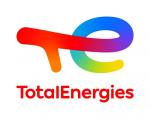 TotalEnergies
TotalEnergies  Laboratoire National de Métrologie et d'Essais - LNE
Laboratoire National de Métrologie et d'Essais - LNE  SUEZ
SUEZ  Institut de Radioprotection et de Sureté Nucléaire - IRSN - Siège
Institut de Radioprotection et de Sureté Nucléaire - IRSN - Siège  Ifremer
Ifremer  CASDEN
CASDEN  Aérocentre, Pôle d'excellence régional
Aérocentre, Pôle d'excellence régional  MabDesign
MabDesign  MabDesign
MabDesign  Institut Sup'biotech de Paris
Institut Sup'biotech de Paris 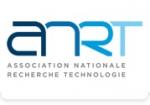 ANRT
ANRT  ONERA - The French Aerospace Lab
ONERA - The French Aerospace Lab
-
JobPermanentRef. ABG124941Corteria Pharmaceuticals- Ile-de-France - France

Jeune Docteur, Chercheur en Biologie Cellulaire & Moléculaire (H/F)
BiologyAny -
JobFixed-termRef. ABG125071KTH- Sweden
ERC-funded postdoc position on the detection of gas-phase organic radicals, KTH, Stockholm, Sweden
Chemistry - Physics - Engineering sciencesAny -
JobPermanentRef. ABG123642Laboratoire des Courses Hippiques (GIE LCH)- Ile-de-France - France

Chargé(e) de Recherche et Innovation (H/F) / Senior Scientist Research & Innovation (M/F)
Chemistry - BiochemistryConfirmed

